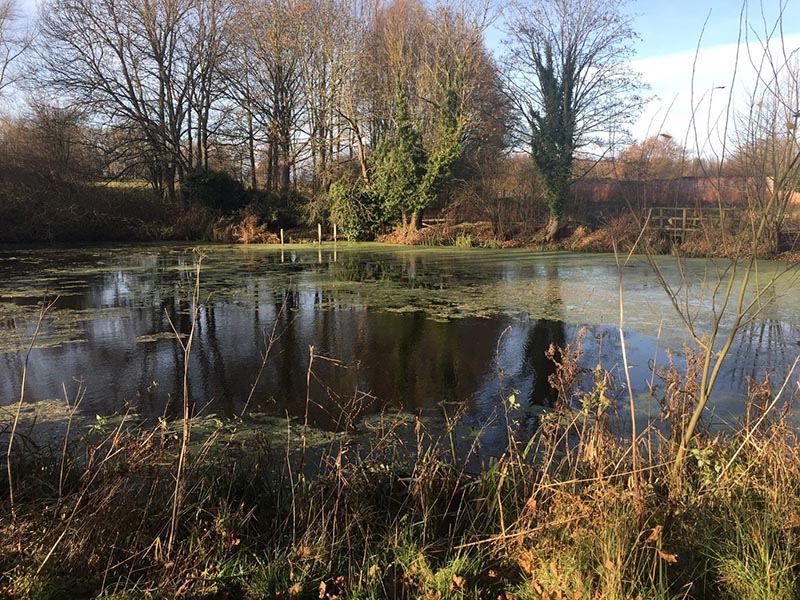
I recently attended a great crested newt mitigation course run by the Field Studies Council (FSC) at their Preston Montford centre. The course was run by Jim Fairclough and David Orchard in early December 2016.
The course was aimed specifically at ecological consultants, and aimed to cover when GCN licences are required and develop skills to plan and manage a GCN mitigation project to industry best practise standards. The tutors were both friendly, approachable and knowledgeable.
The course itself covered GCN licencing, mitigation and compensation methods, and the latest in GCN research. The course made excellent use of case studies throughout, which was a fantastic way to show which mitigation and compensation measures worked (and what didn’t!) in a given example.
The use of case studies and methodical approach to the course objectives gave the participants the chance to gain a lot of confidence in handling GCN mitigation and compensation measures. The use of group work talking different scenarios also gave participants the option to compare approaches with other participants.
In addition, a practical fencing demonstration and use of the Preston Montford grounds also provided a more practical element to the course. This included reviewing different types of GCN fencing, and reviewing industry best practise for fencing and pitfall trapping.
One of the most useful pieces of information I picked up during this course was the development of the British Herpetological Society Amphibian Gully Pot Ladder. This gully pot ladder allows amphibians to climb out of gully pots, where many thousands of amphibians get trapped every year. It’s a very simple solution to a massive problem, and a new go-to for many consultants on mitigation plans and compensation schemes. Try their website to find out more – British Herpetological Society.
In my experience many courses fall down on failing to sufficiently apply the legislation to everyday scenarios and case studies – well this course is the exception. Using the course tutors’ extensive experience, the course objectives were achieved in an understandable and helpful way.
I highly recommend this course for surveyors with GCN survey experience looking to enhance their skillset towards mitigation plans. For more information on the course see the link to the 2017 course here – course details.

Figure 1: Different types of fencing including pitfall traps, carpet squares and a newt bridge.

Figure 2: A GCN pond at Preston Montford.

There are no comments yet. Why not get involved?